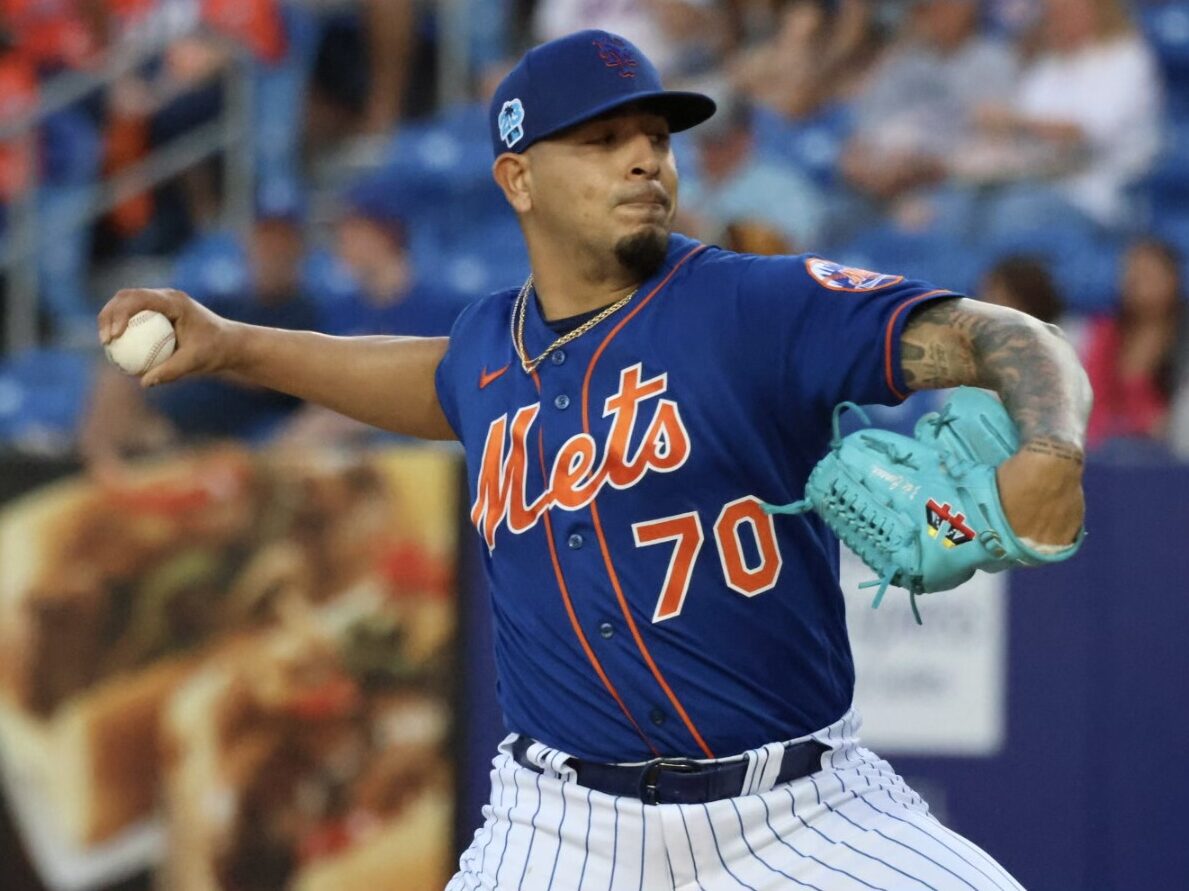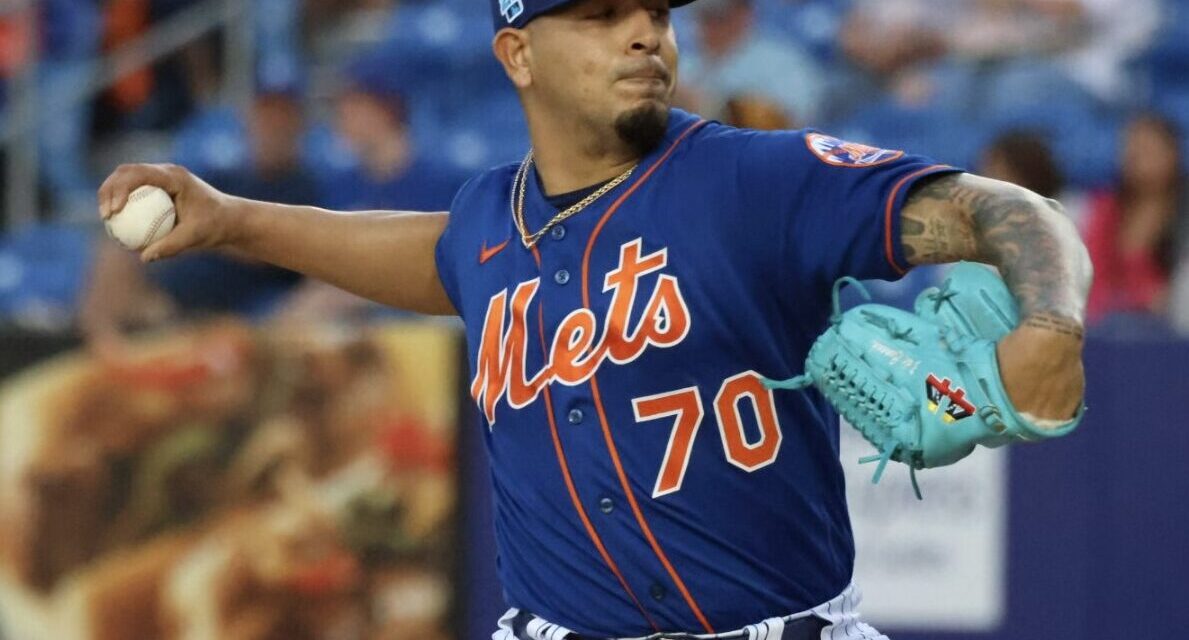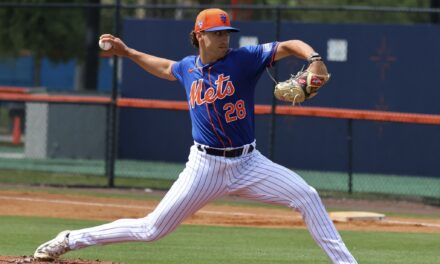
Photo by Ed Delany of Metsmerized
Every year, pitchers come to spring training with new toys, whether that be increased velocity, added strength and durability, or a new pitch. In Jose Butto’s case in 2023, his new toy is a cutter. Butto is looking to build on a career year in 2022 which included his MLB debut, a successful run in Triple-A Syracuse, and 135 total innings on the season after signing with the Mets as an international free agent out of Venezuela in 2016.
In past seasons, Butto has worked with a four-seam fastball, a signature changeup that’s rated as the best in the Mets’ system, and a sharp curveball that has more velocity than most, averaging nearly 80 miles-per-hour. He played around with a slider at the end of last season, which often morphed into a slurve shape and never had true gyro or sweeping action. This year, however, Butto has opted for a harder breaking ball in the cutter, which has shown impressive results early on. This new pitch should compliment Butto’s arsenal well. It is also worth noting that so far this spring, his curveball has taken on a faster and more downer shape than before, seeing a 2 mph jump to around 82 mph but losing nearly 5” of vertical break.
Looks like José Butto has added a cutter. Statcast was picking it up as a four-seam fastball, but this was around 5-6 mph slower.
Gives him another secondary with his signature change and curveball. pic.twitter.com/j4o9ry3tcz
— Jacob Resnick (@Jacob_Resnick) February 25, 2023
Mets fans should be excited about Butto’s cutter, as any breaking ball in the upper 80s and low 90s can give hitters nightmares. In his first spring training outing of the season on February 25th, Butto used the new pitch at 23% of the time (10 of 43 pitches) and saw three swings-and-misses on the ten he threw, two of which went for strikeouts (40% CSW). The cutter averaged 88.8 mph and had nearly nine inches less vertical break and seven inches of difference in horizontal break than his fastball, which averaged 95.4 mph.
This pitching profile should be distinct enough to keep hitters guessing on both sides of the plate and keep Butto from sitting on his slower curveball speed on low pitches with two strikes. While cutters aren’t always swing-and-miss pitches, the offering should pair well with Butto’s four-seam to mitigate the risk of home runs, help increase his ground ball rates, and lower BABIP against. Let’s not forget that Butto’s best pitch is his changeup, and that the risk of hitters becoming overly acquainted with his cutter is relatively low due to the diversity of his arsenal. He only threw the changeup only five times in his first spring training outing, and the usage of his four pitches is likely to even out over time as the changeup had a 30% usage in 2022. The cutter should help avoid over-reliance on the four-seamer and even out usages between all four pitches which is a trend that has helped many starting pitchers find success in recent years.
An extended sample size of a full big-league camp will tell whether the cutter is the variable that puts Butto closer to competing for a spot on the big-league roster. With the Mets pretty set on starting pitching depth, however, Butto will likely be working out his new pitch in Syracuse this season.















